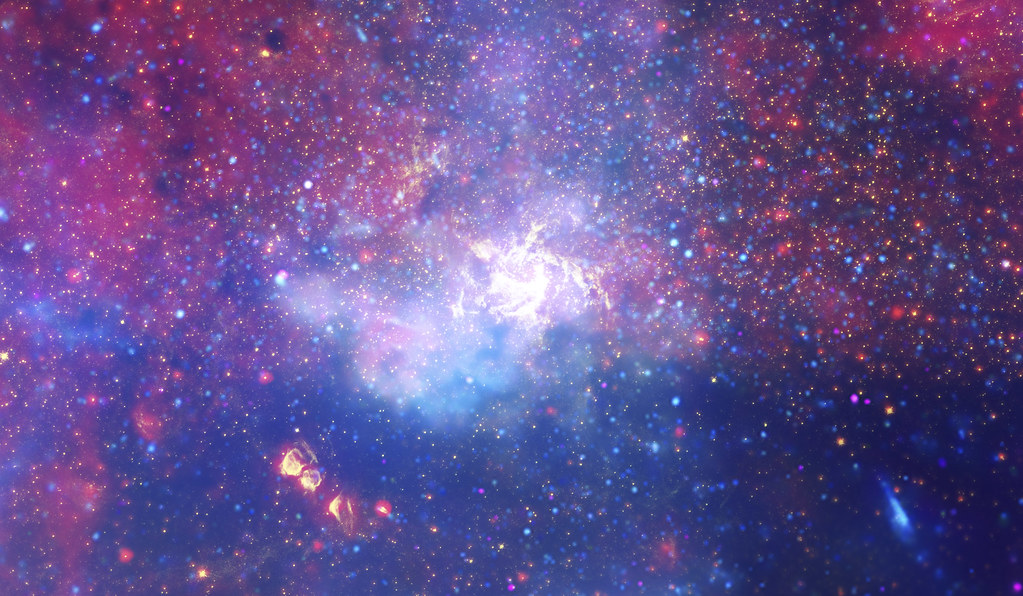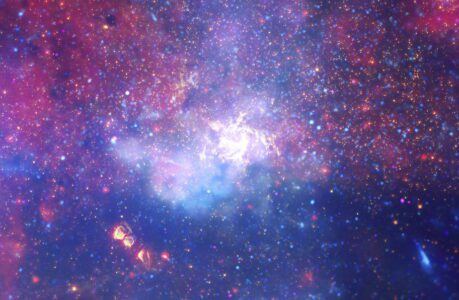Sagittarius is one of the most fascinating and significant constellations in the night sky. It is the ninth zodiac sign, represented by a centaur holding a bow and arrow, and is visible from both hemispheres. In this article, we will take a closer look at Sagittarius and explore its astronomical significance and rich history.
The Constellation of Sagittarius
Sagittarius is located in the southern sky, between Scorpius and Capricornus. It is one of the largest constellations, covering an area of 867 square degrees. It is also home to several notable objects, such as the Sagittarius Dwarf Elliptical Galaxy, the Lagoon Nebula, and the Trifid Nebula.
The Mythology of Sagittarius
Sagittarius is associated with the centaur Chiron, who was a wise and learned creature known for his mastery of medicine, music, and archery. The constellation is also linked to the Greek god Apollo, who is the god of music, prophecy, and healing.
Astronomical Significance
Sagittarius is an important constellation for astronomers because it lies in the direction of the Galactic Center. The Galactic Center is the point around which the Milky Way galaxy rotates, and it is where the densest concentration of stars and interstellar material is located. Sagittarius A* is the supermassive black hole that resides at the center of the Milky Way, and it is one of the most studied objects in the universe.
Observing Sagittarius
To observe Sagittarius, you need to find a clear, dark sky location away from city lights. Sagittarius is visible during the summer months in the Northern Hemisphere and during the winter months in the Southern Hemisphere. It is best viewed during the late evening and early morning hours.
Sagittarius A*
Sagittarius A* is a supermassive black hole located at the centre of the Milky Way galaxy. It is one of the most studied objects in the universe and has a mass of approximately four million times that of the sun. Sagittarius A* was first detected in the 1970s, and since then, astronomers have been studying its properties and effects on the surrounding stars and gas clouds.
One of the most notable discoveries about Sagittarius A* is that it is surrounded by a large, rotating disc of gas and dust. This disc is thought to be the source of the material that is ultimately consumed by the black hole. Additionally, Sagittarius A* has been observed to emit a type of radiation called synchrotron radiation, which is produced by charged particles moving at high speeds in a magnetic field.
Understanding the properties and behaviour of Sagittarius A* is important for studying the evolution of galaxies and the role that black holes play in their formation. It is also relevant for understanding the physics of extreme environments and the fundamental nature of the universe. While Sagittarius A* is located more than 25,000 light-years away from Earth, its study continues to be a priority for astronomers and astrophysicists.
Key stars in Sagittarius
Sagittarius is a large constellation that contains numerous stars, including some bright and notable ones. Here are some of the key stars in Sagittarius:
- Kaus Australis: Also known as Epsilon Sagittarii, Kaus Australis is the brightest star in Sagittarius. It is a blue-white giant star that is approximately 143 light-years away from Earth.
- Nunki: Also known as Sigma Sagittarii, Nunki is a bright blue star that is located near the centre of the Milky Way. It is approximately 228 light-years away from Earth.
- Ascella: Also known as Zeta Sagittarii, Ascella is a triple-star system that is located about 89 light-years away from Earth. It is a bright, blue-white star that is easily visible to the naked eye.
- Phi Sagittarii: Phi Sagittarii is a binary star system that is located about 156 light-years away from Earth. The two stars in the system orbit each other every 44 years.
- Albaldah: Also known as Pi Sagittarii, Albaldah is a triple-star system that is located about 166 light-years away from Earth. It is a blue-white star that is the brightest member of the system.
- Kaus Borealis: Also known as Lambda Sagittarii, Kaus Borealis is a blue-white star that is located about 77 light-years away from Earth. It is the second-brightest star in Sagittarius after Kaus Australis.
These stars, along with many others in Sagittarius, are visible in the night sky and have been studied by astronomers for centuries. They play an important role in understanding the properties and structure of the Milky Way galaxy and the universe as a whole.
What should i look for in Sagittarius
Sagittarius is a fascinating constellation that is home to many interesting objects that can be observed with binoculars or a telescope. Here are some things you should look for in Sagittarius:
- Sagittarius A*: This is a supermassive black hole located at the centre of the Milky Way galaxy. While you won’t be able to see the black hole itself, you can observe the stars and gas clouds that are being affected by its gravity.
- The Lagoon Nebula: This is a bright emission nebula that is located about 5,000 light-years away from Earth. It is visible to the naked eye as a faint patch of light, but a telescope will reveal its intricate details and colours.
- The Trifid Nebula: This is another emission nebula that is located near the Lagoon Nebula. It gets its name from the three dark lanes that divide it into different sections. It is also visible with binoculars or a telescope.
- The Omega Nebula: This is a large emission nebula that is located about 5,500 light-years away from Earth. It is also known as the Swan Nebula due to its shape.
- The Sagittarius Star Cloud: This is a dense region of stars located near the centre of the Milky Way. It appears as a bright, hazy patch of light and is best observed with binoculars.
- M22: This is a globular cluster that is located about 10,000 light-years away from Earth. It contains hundreds of thousands of stars and is one of the brightest and most easily observable globular clusters.
Observing these objects in Sagittarius can be a thrilling experience and can provide a deeper understanding of our universe and the structures within it.
How can I find Sagittarius
Sagittarius is one of the most easily recognizable constellations in the night sky, and it is visible from both hemispheres. Here are some tips on how to find Sagittarius:
- Look for it during the summer months in the Northern Hemisphere and during the winter months in the Southern Hemisphere. Sagittarius is located in the southern sky and is most visible during the late evening and early morning hours.
- Find the constellation Scorpius, which is located to the east of Sagittarius. Scorpius is also a large constellation and is easily recognizable due to its distinctive shape.
- Look for the “teapot” shape that is formed by the stars in Sagittarius. This shape is made up of the stars Kaus Australis, Kaus Media, Kaus Borealis, and Nunki.
- Use a star chart or astronomy app to help you locate Sagittarius. These resources will provide a map of the night sky that can help you identify the location of Sagittarius and its key stars and objects.
Once you have found Sagittarius, you can observe its many interesting objects, such as the Lagoon Nebula and the Sagittarius Star Cloud. With a little patience and practice, you can become an expert at locating and observing this fascinating constellation.

